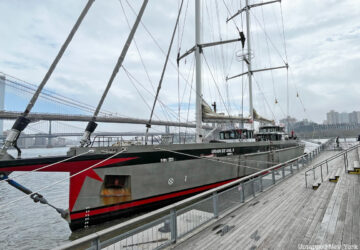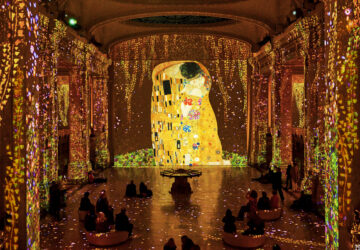
The Golden Age of New York City’s maritime history bears a few tarnished spots. While in the first half of the 19th century New York became America’s largest city, it boomed into a great global metropolis in the latter half. The South Street Seaport Museum’s main buildings on Fulton and Water Streets, located in what was then the Second Ward, are fine examples of the irrepressible commercial spirit that defined the first half of the 19th-century, when New York City rose to become America’s preeminent port and commercial city. But, as trade expanded and more sailors came through the area, the Fourth Ward, bordering the Second Ward, became home to New York’s vice district, a strange combination of commercial virtue and sin living side by side. In this list, we’ll explore that darker side of New York’s maritime history, with five wicked secrets, ranging from colorful personalities and addresses to the incredible odds that were overcome in order to build the Brooklyn Bridge.
1. Gallus Mag’s Jar of Ears at 279 Water Street

This little wood-framed building at 279 Water Street was once home to the former Bridge Café and perhaps the most wick South Street Seaport tale. Before Sandy, it was claimed to have been the longest-operating tavern in the city, The building reportedly dates back to 1794, though the Landmarks Preservation Commission dates it to 1801. In the 1850s, it was thought to be the site of the Hole-in-the-Wall. Owned by One-Armed Charley Monell, his name really says it all, and his two ‘glamorous’ lady bouncers, Kate Flannery and Gallus Mag.
Mag is the much better-known of the two. She stood six feet tall, filed her teeth to points, and kept a pistol at her waist. For those that displeased her, Mag allegedly had the interesting habit of biting off their ears, occasionally a finger, and pickling them in a large jar she kept behind the bar.





